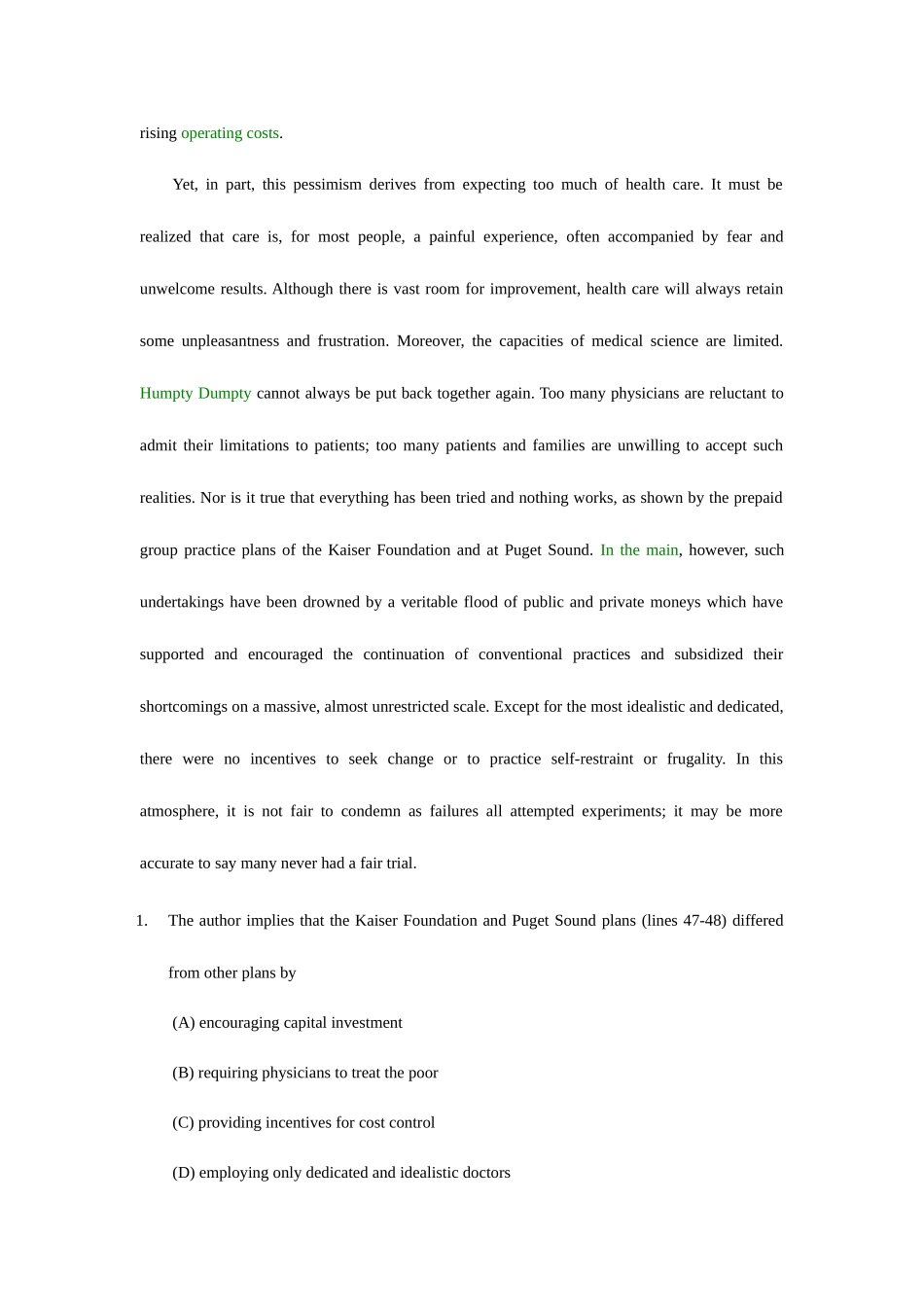考试时间 3 月 22 日星期六 下午 2:00-5:00 原创作者 Since Would War II considerable advances have been made in the area of health-care services. These include better access to health care (particularly for the poor and minorities), improvements in physical plants, and increased numbers of physicians and other health personnel. All have played a part in the recent improvement in life expectancy. But there is mounting criticism of the large remaining gaps in access, unbridled cost inflation, the further fragmentation of service, excessive indulgence in wasteful high-technology “gadgeteering,” and a breakdown in doctor-patient relationships. In recent years proposed panaceas and new programs, small and large, have proliferated at a feverish pace and disappointments multiply at almost the same rate. This has led to an increased pessimism—“everything has been tried and nothing works”—which sometimes borders on cynicism or even nihilism.It is true that the automatic “pass through” of rapidly spiraling costs to government and insurance carriers, which was set in a publicized environment of “the richest nation in the world,” produced for a time a sense of unlimited resources and allowed to develop a mood whereby every practitioner and institution could “do his own thing” without undue concern for the “Medical Commons.” The practice of full-cost reimbursement encouraged capital investment and now the industry is overcapitalized. Many cities have hundreds of excess hospital beds; hospitals have proliferated a superabundance of high-technology equipment; and structural ostentation and luxury were the order of the day. In any given day, one-fourth of all community beds are vacant; expensive equipment is underused...


